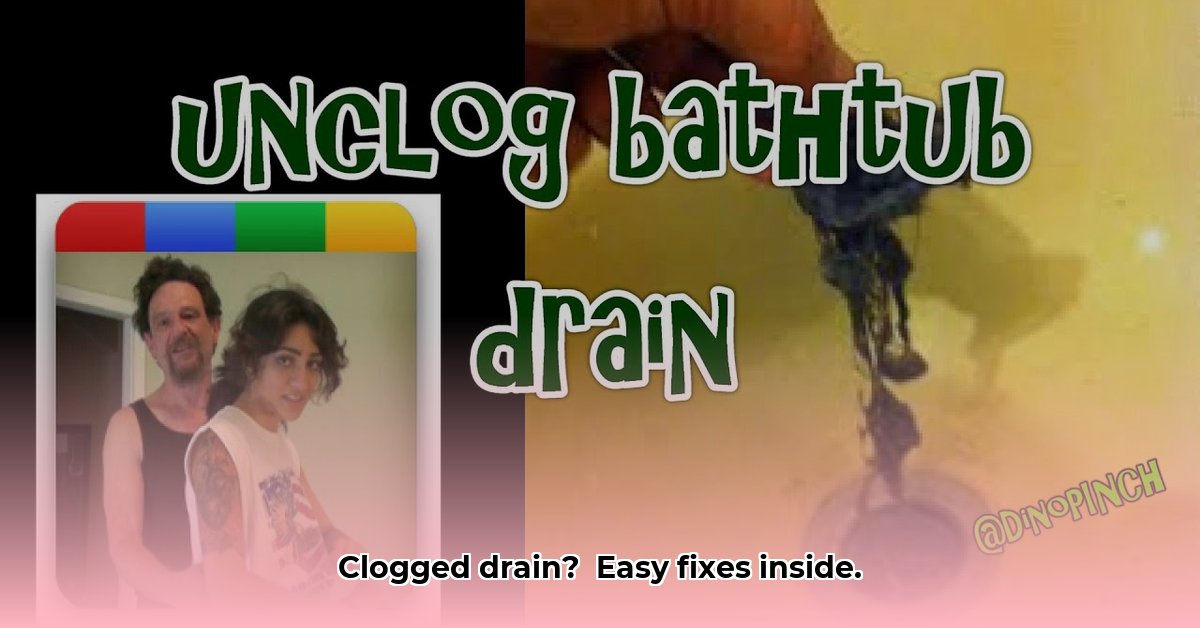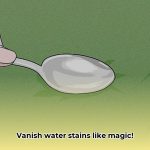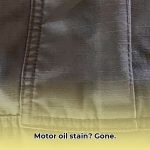A clogged tub is a pain, but you can probably fix it yourself without calling a plumber. This guide provides easy-to-follow solutions, from simple DIY tricks to knowing when it’s time for a pro. Let’s get that water flowing again!
Quick Fixes: Unclog Your Tub Now!
Here’s a quick rundown of your options. This table helps you choose the best method based on difficulty, time, and tools.
| Method | Difficulty | Estimated Time | Tools | Possible Effectiveness |
|---|---|---|---|---|
| Check the Stopper | Easy | < 1 minute | None | Solves simple stopper issues |
| Baking Soda & Vinegar | Easy | 15-30 minutes | Baking soda, vinegar, hot water, salt (optional) | Likely effective for mild clogs |
| Boiling Water | Easy | ~5 minutes | Kettle or pot | Good for minor soap clogs |
| Plunger | Easy | 5-10 minutes | Cup plunger | Often works for hair and debris |
| Clean/Remove Stopper | Medium | 10-20 minutes | Screwdriver, pliers (possibly) | Effective if clog is near the stopper |
| Plumber’s Snake | Medium | 15-30 minutes | Plumber’s snake | Highly effective for stubborn clogs |
| Wet/Dry Vacuum | Medium | 10-20 minutes | Wet/dry vacuum, attachments, rag | Effective for reachable clogs |
| Chemical Drain Cleaner | Easy | 30-60 minutes (+) | Drain cleaner, gloves, eye protection | Powerful, but use with caution! |
Step-by-Step Unclogging Guides
1. The Obvious: Check the Stopper
Seriously, sometimes it’s this simple! Ensure the stopper is fully open.
2. Natural Remedy: Baking Soda and Vinegar
- Pour: 1/2 cup baking soda down the drain.
- Add: 1 cup vinegar. It’ll fizz—that’s good! The reaction breaks down gunk. Adding salt might boost effectiveness.
- Wait: 30 minutes (or even an hour for stubborn clogs).
- Flush: With lots of hot water.
3. Simple Heat: Boiling Water
- Boil: A kettle or pot of water.
- Pour: Slowly and carefully down the drain. Avoid splashing!
4. Plunger Power
- Water Level: Enough to cover the plunger’s cup.
- Seal: Place the plunger over the drain, creating a tight seal (petroleum jelly can help).
- Plunge: Vigorously up and down.
5. Deep Clean: Remove & Clean the Stopper
- Locate Screws: Usually under the overflow plate.
- Remove Stopper: Unscrew the plate and remove the stopper (you might need pliers).
- Clean: Remove hair and gunk.
- Reassemble: Securely.
6. For Stubborn Clogs: The Plumber’s Snake
- Insert: Feed the snake into the drain.
- Rotate & Retrieve: Rotate as you push. Feel resistance? Rotate more, then pull back slowly.
- Repeat: If needed.
7. Last Resort: Chemical Drain Cleaner
Use with extreme caution! Follow label instructions precisely. Wear gloves and eye protection. Ventilate the area well. Never mix different cleaners.
8. Suction Solution: Wet/Dry Vacuum
- Prep: Set the vacuum to “liquids.” Cover the overflow drain with a wet rag to create a seal.
- Vacuum: Place the hose over the drain and turn on the vacuum.
Troubleshooting
- Stuck Snake: Twist and pull gently. Don’t yank!
- Persistent Clog: See “When to Call a Plumber.”
Preventing Clogs
- Drain Strainer: Use one!
- No Grease or Oil: Dispose of them elsewhere.
- Hot Water Flush: After each use.
- Regular Cleaning: Baking soda and vinegar monthly.
- Watch What Goes Down: No coffee grounds, paint, etc.
When to Call a Plumber
Sometimes, DIY isn’t enough. Call a plumber if:
- DIY fails: You’ve tried everything, and the clog persists.
- Recurring clogs: The same drain keeps clogging.
- Multiple clogs: Several drains are clogged simultaneously.
- Slow drains everywhere: Drains throughout your house are slow.
- Standing water/sewage backup: This is a plumbing emergency!
- Sewer smell: Indicates trapped, decaying material.
- Gurgling drains: Suggests a blockage or venting issue.
Eco-Friendly Drain Cleaning
Consider these alternatives to harsh chemicals:
- Natural drain cleaners: Many commercial options use baking soda, enzymes, or citrus.
- DIY solutions: Baking soda and vinegar, boiling water, and salt are good starting points.
- Prevention: Preventing clogs is the most eco-friendly solution!
Conclusion
A clogged tub is annoying, but these methods should help you conquer the clog. Share your experiences or ask questions in the comments below! And remember, a plumber is always a good option for persistent problems.
- How to Measure Your Belt Size (for Women): 3 Easy & Accurate Methods - April 27, 2025
- How to Remove Permanent Hair Dye From Hair: Safe & Effective Methods - April 27, 2025
- How to Remove Ink from Leather: Effective DIY Methods and Expert Tips - April 27, 2025










